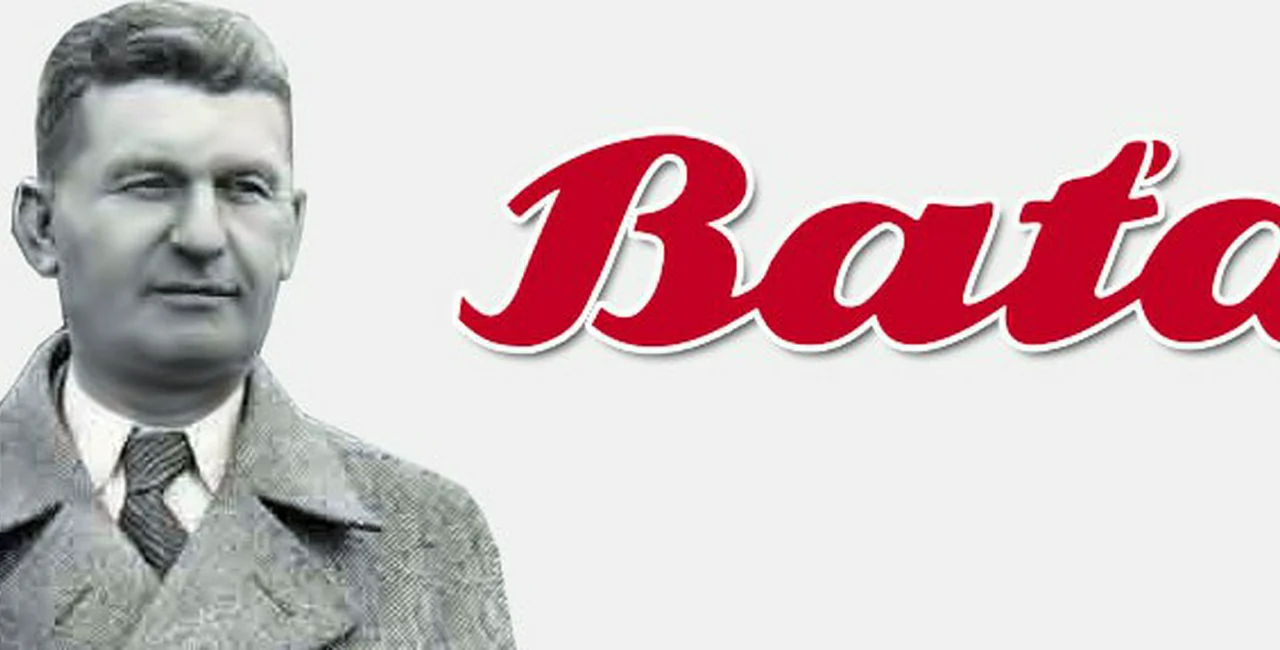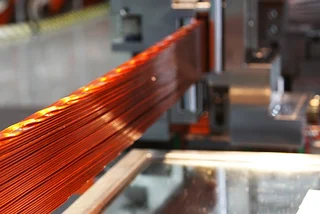Bata Shoes (Baťa in Czech) is among the most famous brands of Czech origin, but the story of the company goes far beyond what people wear on their feet. Its founder, Tomáš Baťa, is viewed by many today as both a shrewd and innovative businessman, whose legacy is both interesting and complex.
First Steps Toward a Global Brand
Tomáš Baťa’s family had been in shoe business for several generations. The family’s reputation helped the young Baťa when he set up a small cobbling company in 1894 at the tender age of 18 with his brother and sister, using a small fortune he inherited from his mother. Despite his youth, Tomáš directed the company from the beginning, such as introducing mechanized production in 1904 after a trip to the US. In 1908, the young Tomáš became the company’s sole owner following the death of his brother Antonín.
PARTNER ARTICLE
In the early years, the company grew from an initial workforce of 50 to 1400 in 1910. This number tripled by the end of the war due, in no small part, to the fact that the company had received the tender to make boots for the Austro-Hungarian Army. The original commission was for 500,000 pairs of boots. At the war’s end, production rose to 10,000 pairs a day.
Disaster and Innovation
Peacetime saw a serious slump in demand. The end of the war meant fewer boots needed for soldiers. On top of that, the Baťa company was part of the newly formed Czechoslovakia which had a smaller population and army than the monarchy which it had once been a part. Plus Europe, along with much of the rest of the world, was experiencing an economic downturn.
Consequently, Baťa’s stock was remaining on the shelves. Falling demand meant a fall in production, which resulted in a big cut in the number of employees. By 1923, the workforce was down to 1,802, less than half of its 1918 peak. These trying times, in some ways, were the seeds for the company’s future success. Baťa’s solution to falling sales was to reduce the retail price of the brand’s shoes by 50%. Stock which would’ve once welcomed the attention of a 10-foot pole was now selling like proverbial hot cakes. 98,711 pairs were sold in the first week alone. Production picked up to meet demand and Baťa started to become a brand associated with affordable footwear. However, in order to carry out the price cuts, wages were reduced by 40%.
The company also kept costs down through technological innovation. In 1924, a conveyor belt assembly line system modeled on Henry Ford’s was introduced. By the thirties, Baťa was the dominant footwear manufacturer in Czechoslovakia. This success was highlighted by the opening of the Baťa building on Wenceslas Square in 1929. The building, considered a landmark of functionalism, still stands today.
A Kindly Capitalist
Plenty of people have become rich selling things other people want. What made, and still makes, Baťa noteworthy is that he appeared to care as much for the well-being of his employees as for his company’s profits. His beneficence was seen in both the way he paid his workers and that he provided much more than employment.
According to tables published in the company’s own newspaper, Sdělení, Baťa workers were paid from one and half times to twice as much as the average Czechoslovak worker. However, the sociologist Annett Steinführer, in an essay called Uncharted Zlín: On the Untold and Unknown of the Realized Utopia, states that wages could be quite different among workers doing the same job. She also contends that there is not enough evidence about wages to make a conclusive claim on the issue.
In addition to the apparent high wages, the company provided budget meals for employees and free cinema screenings. Education courses for employees in technical areas, foreign languages, and self-improvement were supplied after the war. In 1928, Baťa set up a relief fund to provide social and health assistance for employees. Two years later the company introduced a 5-day working week. All the while, production continued to rise with 21,784,000 pairs of shoes made in 1930, growing to 35,124,000 in 1931.
A Factory Town in Gardens
Baťa was not content to satisfy his workers at work. He also believed it was important to provide pleasant living conditions for them. He once said, “Buildings are just heaps of bricks and concrete. Machines – just iron and steel. It is the people who breathe life into them.” He sought to achieve this humanistic vision as much in his management as in the urban environment of his workers.
The idea began in 1912 with the construction of homes for employees. However, his idea of synthesizing work and living was fully realized when he became mayor Zlín in 1923. Much of this vision drew on the architectural modernism of Le Corbusier and the Garden City Movement. Ultimately, the task of creating Zlín as Baťa imagined fell to František Gahura and Vladimír Karfík. The main idea was for people to live in a pleasant and orderly environment with a sufficiently comfortable home life, including a garden and clean urban environment. At the root of this was the desire to keep the workforce happy and thus productive.
An Ideal Businessman?
By the standards of contemporary notions of a businessman, Baťa seemed almost socialistic – health care, housing and other provisions for workers. However, his contemporaries wouldn’t have seen it this way. Complaints were made to the parliament about working conditions, though it would seem that the company responded to with improved conditions and employee benefits. Baťa was also notably anti-union, and being the sole owner of the company, could be said to display a certain autocratic management style.
Another charge that is harder to defend is that Baťa’s urban planning philosophy invited a certain monoculture into his cities. Baťa saw the city as an extension of the factory. While in part it meant a place to ensure his employees were happy, he also believed that one city should have one industry, which had to be stifling to live in. And let’s not forget, those homes belonged to the company, which meant a person’s home was tied very closely to their position in the company. Losing a job meant more than losing work.
Change in Fortune but the Direction Remains
In his own time, Baťa no doubt considered himself a success. Worker support for radical politics was dwindling. The Great Depression, which was destroying rivals, left the company mostly unscathed. The workforce dipped by 2000 people to 17,800 in 1933, but the number jumped to 22,050 a year later. Sadly, Baťa was not to live to see his company pull through the greatest economic disaster of the 20th century. On the July 12, 1932, his plane crashed into a factory chimney while leaving an airfield in Otrokovice.
Yet, his distinctive style of business did not die with him. His half-brother Jan Antonín Baťa became the company’s director. The new director set about expanding the company to the world. At the beginning of the thirties, factories were open in Best in the Netherlands; East Tilbury in England; Hellocourt, Neuvic and Dordogne in France, not to mention places in Canada and India. These cities not only produced shoes. They were designed to resemble Zlín with the same attention to harmonious urban living. Jan Antonín Baťa also expanded Zlín with new housing developments in 1935 and the construction of Building No. 21, which at the time was one of the tallest buildings in Europe.
Like so much in Czechoslovakian history, world events shaped the company’s fortunes. Following the German occupation of Czechoslovakia, Jan Antonín was forced to flee, first moving to the US and then Brazil where, in what seemed a company trademark, more towns with the names like Bataypora, Bataguassu and Batauba were established. He also oversaw the company’s continued expansion. Despite his flight, Jan Antonín was blacklisted as a Nazi collaborator. Later, in 1947, he sentenced to 15 years in absentia for supposedly working with the Nazis. It took sixty years before his name was cleared.
Even before the charges were laid against Jan Antonín, he suffered economic misfortune. The Czechoslovak part of the company was nationalized under the presidency of Beneš in 1945. Meanwhile, the other branches of the company came under the control of Thomas Baťa Jr., the son of Tomáš Baťa, who continued to run the company until 2001. Today, Baťa’s great grandson, Thomas Archer Baťa is back in the Czech Republic where he is the head of the largest European branch of the chain.
Baťa’s Legacy
It’s undeniable that Baťa made a contribution to the way people lived. He seemed to do the impossible, creating a profitable company which offered affordable goods while striving to improve the life of its workers. You could say it was a win-win-win situation. However, it was also true he always watched the bottom line, and depending on your political persuasion, that was a good or bad thing.
Maybe a more relevant question is: would this business model work today? People, at least those in modern economies, are used to changing jobs and having a greater degree of economic self-determination? Was Baťa’s experiment in ‘capitalism with a human face’ only something that could happen here, or is it an example we can still learn from?
Related articles












 Reading time: 7 minutes
Reading time: 7 minutes 































